Pain Treatment at Life Medical
Available at Our St. Louis Park & Edina Offices
Comprehensive, Integrative Pain Care
At
Life Medical, we know that pain doesn’t just interfere with your body—it affects your entire quality of life. Our
providers take an integrative, whole-person approach, ensuring that each patient understands their options and receives a personalized plan tailored to their condition, preferences, and resources.
Understanding Pain and Treatment Categories
Pain is a symptom—like your body’s “check engine” light—indicating something deeper. Effective treatment requires understanding the underlying cause. Treatment options generally fall into three categories:
- Curative treatments: therapies aimed at removing or reducing the underlying cause.
- Palliative treatments: options that relieve pain without curing the condition.
- Adoptive treatments: approaches that help the body compensate for weaknesses, offering symptom relief while in use.
When possible, therapies with curative potential are prioritized. Palliative options are considered if they provide relief without causing harm. Financial realities and insurance coverage are also factored into each care plan.
Pain Treatment Options
Medications
Conventional medications for pain include anti-inflammatories, narcotics, and muscle relaxants. Natural options such as herbal remedies and medical cannabis may also be used, though effectiveness and safety vary by case. In some situations, synthetic medications are safer and more effective than natural ones.
Physical Therapy
Physical therapy provides hands-on care and uses therapeutic devices coordinated with your physician. Techniques may include ultrasound, phonophoresis, spinal decompression, cryotherapy, TENS, therapeutic exercise, and low-level laser therapy to improve mobility and reduce pain.
Chiropractic Care
Chiropractic care is a non-invasive treatment for nerves, joints, and muscles. Through spinal manipulation, vibration therapy, stretching, and related techniques, chiropractic care can relieve pain and improve function. Most insurance plans cover these services.
Acupuncture
Acupuncture is effective in treating both acute and chronic pain. For some patients, it provides curative results, and it is increasingly covered by insurance plans as a recognized therapy.
Invasive Therapies & Regenerative Treatments
For chronic pain, advanced therapies may be considered. Options include epidurals, nerve ablations, trigger point injections, prolotherapy, platelet-rich plasma (PRP), stem cell therapy, and ozone therapy. These treatments can provide long-term relief for patients who do not respond to conventional care.
Homeopathy
Homeopathic care helps the body’s natural ability to heal by addressing internal imbalances that contribute to pain. It is often used as part of a broader, whole-person treatment plan.
Psychological Support
Mental health therapies such as cognitive behavioral therapy (CBT), mindfulness practices, and stress reduction techniques can reduce pain by changing how patients perceive and manage discomfort. These approaches improve resilience and quality of life while complementing physical treatments.
NeuroResearch Protocol
The NeuroResearch Protocol uses supplement-based care to correct neurotransmitter imbalances. This approach is particularly helpful for conditions linked to chronic pain, such as fibromyalgia, migraines, IBS, depression, and anxiety.
Alternative & Natural Methods
Additional therapies may include transcranial electrical stimulation, which is covered by insurance, and magnet therapy for affordable joint pain relief. Supplements such as curcumin and PEA also provide safe, cost-effective support for managing ongoing pain.
Why Patients Choose Pain Treatment at Life Medical
Integrative care combining conventional and alternative therapies
Personalized treatment plans tailored to cause, severity, and patient goals
Collaborative providers working across specialties for whole-person care
Patient education to help you make informed, confident decisions
Treatment Examples
Example: Treating a Common Injury – Rotator Cuff Tear
Rotator cuff injuries are a common and painful condition. In most conventional practices, treatment is limited to medications, steroid injections, or surgery—often with less-than-ideal outcomes. At Life Medical, we take a more comprehensive approach, offering a wide range of therapies that give patients more options and better results.
For rotator cuff injuries, treatment options may include physical therapy, low-level laser therapy, regenerative injection therapies such as prolotherapy or PRP, acupuncture for pain relief, medications or medical marijuana for palliative support, steroid injections when appropriate, and surgery as a last resort. By combining conventional and integrative treatments, we can create a plan tailored to each patient’s needs.
Example: Treating Pain of Unknown Cause
A 60-year-old woman came to Life Medical with debilitating pain on her right side that had lasted several months. Despite a full conventional workup, no cause was found. Her previous physician prescribed opioids for symptom relief, but she preferred not to take narcotics.
At our clinic, her exam was normal, so we began with a homeopathic approach. During her two-hour intake, we explored not only her symptoms but also her emotional state and life circumstances. She described feelings of abandonment and sadness that did not match her external reality. Based on this, the homeopathic remedy Pulsatilla was prescribed.
Within a month, her pain had greatly improved, and within six months it resolved completely. Beyond the physical relief, her mood brightened, her tears stopped, and her family relationships improved. This case demonstrates how, when well-matched, homeopathy can provide deep and lasting healing—addressing both physical pain and emotional wellbeing.
Find Relief from Pain
Don’t let chronic or acute pain control your life. At Life Medical, we combine advanced medicine with integrative therapies to help you feel better, move better, and live better.
Call us today at
(952) 933-8900 to schedule your pain evaluation.
